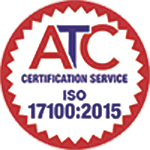Quick Quote
Archives
- November 2023
- October 2023
- September 2023
- August 2023
- July 2023
- June 2023
- May 2023
- April 2023
- March 2023
- February 2023
- January 2023
- December 2022
- November 2022
- October 2022
- September 2022
- August 2022
- July 2022
- June 2022
- May 2022
- April 2022
- March 2022
- February 2022
- January 2022
- December 2021
- November 2021
- October 2021
- September 2021
- July 2021
- June 2021
- April 2021
- March 2021
- February 2021
- December 2020
- October 2020
- August 2020
- July 2020
- June 2020
- May 2020
- April 2020
- March 2020
- February 2020
- January 2020
- November 2019
- October 2019
- September 2019
- August 2019
- July 2019
- June 2019
- May 2019
- April 2019
- March 2019
- February 2019
- January 2019
- December 2018
- November 2018
- October 2018
- September 2018
- August 2018
- July 2018
- June 2018
- May 2018
- April 2018
- March 2018
- February 2018
- January 2018
- December 2017
- November 2017
- October 2017
- September 2017
- August 2017
- July 2017
- June 2017
- May 2017
- April 2017
- March 2017
- February 2017
- January 2017
- December 2016
- November 2016
- October 2016
- September 2016
- August 2016
- July 2016
- June 2016
- May 2016
- April 2016
- March 2016
- February 2016
- January 2016
- December 2015
- November 2015
- October 2015
- September 2015
- August 2015
- July 2015
- June 2015
- May 2015
- April 2015
- March 2015
- February 2015
- January 2015
- December 2014
- November 2014
- October 2014
- August 2014
- July 2014
- June 2014
Difference Between Translation and Localisation
Translation is one aspect only of localisation and companies who wish to diversify into overseas markets have two choices which are translation & localisation. The translation, adapts a message while localisation is creating an appropriate experience. The translation is typically the beginning of localisation. Everything has to be adapted to suit the preferences of the target market which means currency and unit conversion, altering date formats, adapting imagery, conforming to laws and regulations, and using the country-specific technological standards. Dos libras de fresas cuestan $20 y se le entregarán el 04/05/2022. This wouldn’t suit a Mexican in Mexico because metric units are used for weights, not the imperial units as found in the United States. Also the currency is Mexico is the peso not the US dollar. The Mexican date format is laid out as the day then month then year, not month then day then year like the United States. Un kilo de fresas cuestan 219 MXN y se le entregarán el 05.04.2022. However, there are many other countries that speak Spanish for which this translation may not be suitable. If the sentence is translated for any more Spanish speaking market, any local differences will need to be incorporated into the translation. For example, for Spain, you would need to put the price in Euros. Translation translates a text, but localisation transforms the complete text from a language into a second language. There are virtually no limits to localisation and it goes well beyond translation. These are symbolic meanings from videos, images, emojis, colours, etc. There are also numeric differences such as date & time formats, currency and units of measurement. Language specifics such as the use of idioms, dialects, tone, slang etc, A text’s length, as a translation from English into another language could be at least twice the length. So different wording may be needed if the translation has to fit into the text area in a design as well as putting across the precise message. This is to do with translation. The right left writing which is in use by some Semitic languages such as Hebrew and Arabic may need to be incorporated into a website directed at these language speakers. This is both localisation and translation. The fascinating feature of localisation is when it is done well it is not even noticeable. Localisation makes the reader feel that the specific website, or a mobile app, was designed only for them. By mid 2022, it is expected that 1 in 4 U.S. buyers will have bought something from a retailer in a foreign country. Increasingly, e-commerce offers a global opportunity. However, only 60 percent of people will only purchase products that are advertised in their own native language. Therefore businesses marketing their product need to localise the product descriptions, size charts, adverts and promotions, and providing the customers with their preferred payment choices and currency, just to name a few. Overall, good localisation makes certain that an e-commerce website is not just translated but adapted to the targeted markets. In summary, translation is only one feature of localisation. If translation encompasses cultural and linguistic features localization will also include technical and visual solutions. It ensures the content functions fully in different languages, to ensure that your brand experiences resonate with your global customers.
Here is the Spanish translation without any adapting:
The following Spanish translation will suit the Mexican market:
Mainly applies to localisation
Applying both localisation and translation
When Localisation Is Critical
E-commerce









Leave a Reply